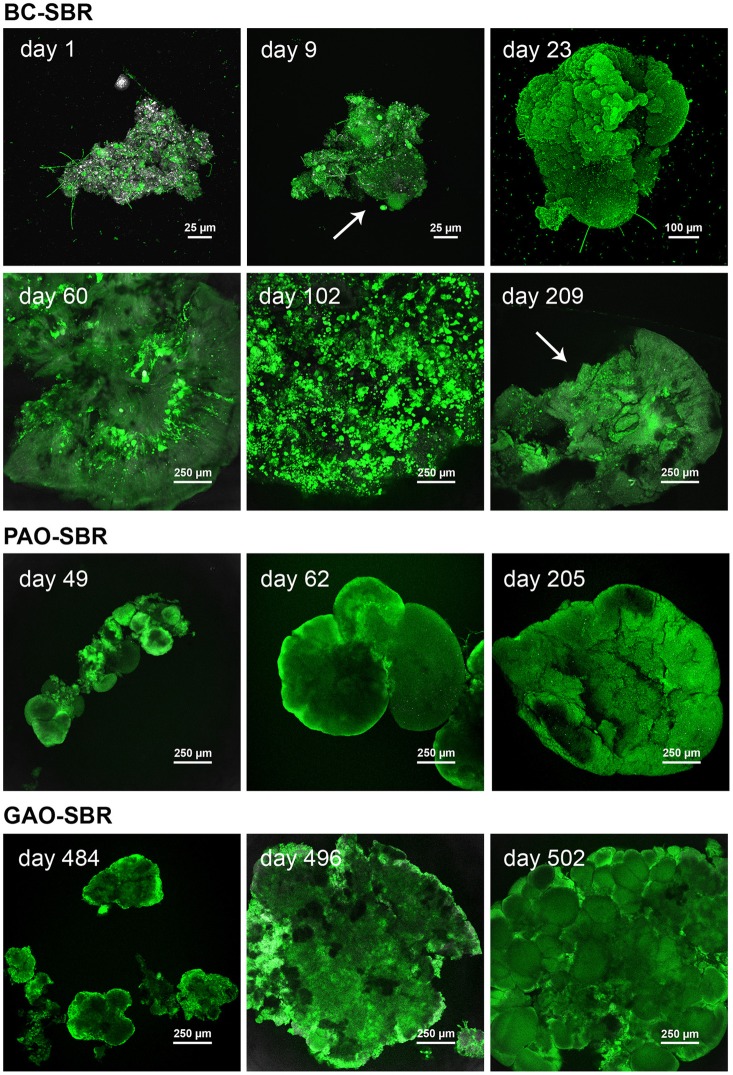Figure 4.
Temporal evolution of the architecture of bioaggregates from activated sludge flocs to early-stage granules and mature granular biofilms in the BC-SBR, PAO-SBR, and GAO-SBR. CLSM datasets were recorded on full bioaggregates from samples taken up to day 23, 62, and 484 in the BC-SBR, PAO-SBR, and GAO-SBR, respectively. Granules from later samples were analyzed on cross-sections. The sample taken on day 209 in the BC-SBR was analyzed as 80-μm cryosection. The green fluorescent dye Rhodamine 6G was used to map cells and biofilm matrices. In 8 bit data sets, 256 green levels were allocated to this dye. The reflection signal was used as reference with 256 gray/white color allocation. In the BC-SBR, swelling of microbial colonies around the floc structure can be observed on day 9. Early-stage granule nuclei on day 23 were 4–5 times bigger than flocs, and displayed compact biofilm aggregation. The evolution of the internal architecture of granules with proliferation of dense microcolonies from the granule core outwards can be observed from CLSM images taken on day 60 and 102. After more than 200 days, mature granules displayed a heterogeneous internal structure with internal voids and detachment. Granules formed in the PAO-SBR by proliferation of dense microbial clusters around the floc structure (day 49). Dense granule nuclei obtained after 62 days evolved toward mature granules exhibiting folded biofilm structures (day 205). In the GAO-SBR dense nuclei (day 484) evolved in 2 weeks toward 4–5 times larger granular biofilms (day 496). On day 510, granules were characterized as heterogeneous conglomerates of dense microbial clusters.

